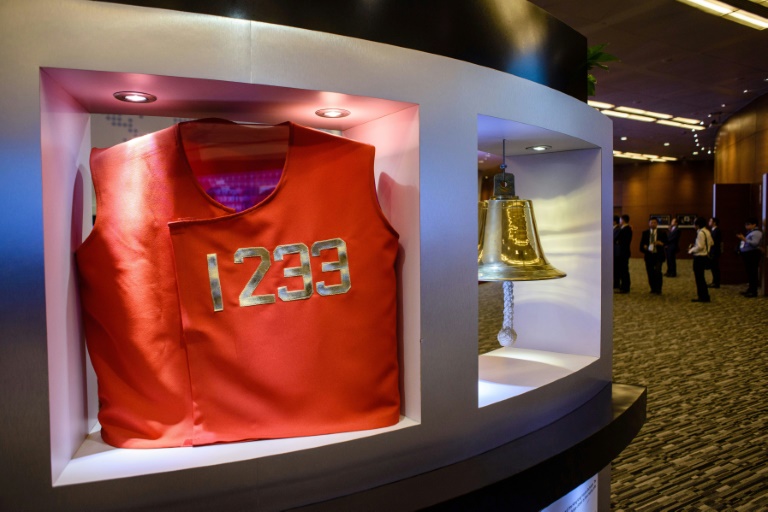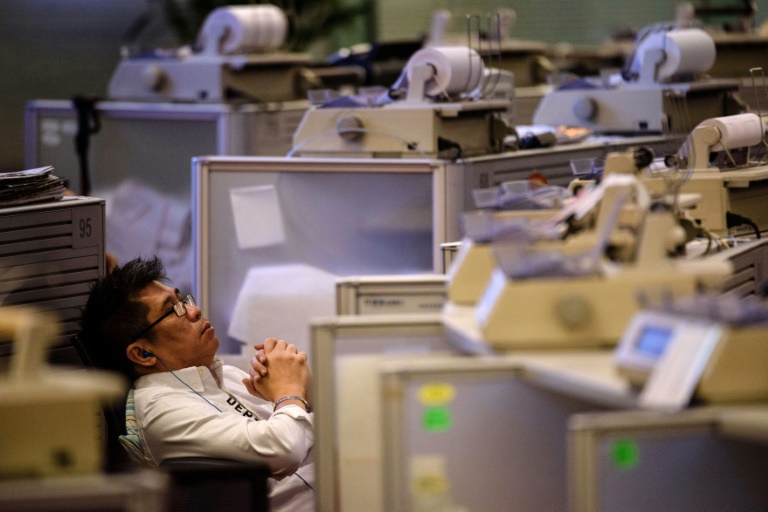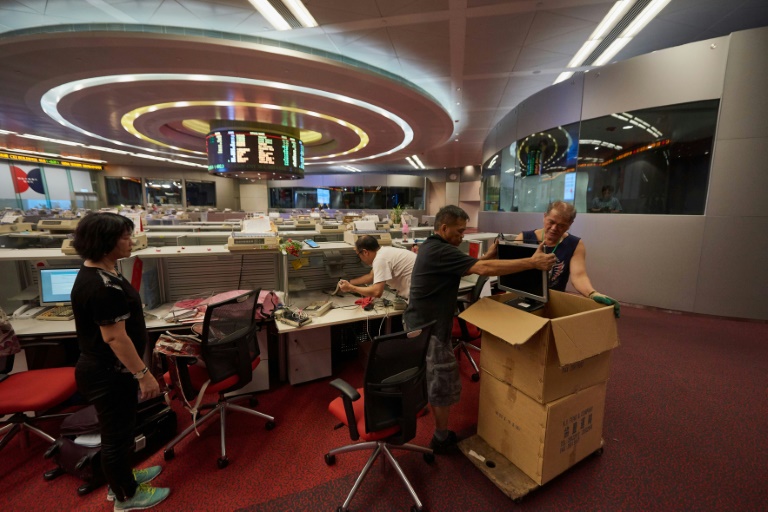In its heyday in the 1980s, more than a thousand brokers dressed in signature red blazers made deals on the trading floor of the Hong Kong Stock Exchange, in what was a raucous, competitive bear pit.
But as electronic and internet services burgeoned, brokers drifted away to corporate offices.
With just a handful of traders remaining, the historic hall will close at the end of the month.
The cavernous red-carpeted space with its circular rows of cubicles and giant digital screens showing stock movements stands largely empty as its last occupants pack up their belongings.
“Advances in electronic trading and technology have made our work much more convenient, but now it lacks the communal atmosphere that has given me many memories,” said Christopher Cheung, a lawmaker representing the financial services sector who used to trade on the exchange floor.
Under British rule, Hong Kong transformed into a commercial and financial hub, becoming a gateway between China and the rest of the world as the mainland opened up its economy from the late 1970s.
In 1986 the city’s four separate stock exchanges merged into one and the trading floor opened.
Part of the Hong Kong Exchange (HKEX) building in the bustling Central district, it hummed with energy as brokers exchanged gossip, gesticulated wildly and yelled into telephones.

In its heyday in the 1980s, more than a thousand brokers dressed in signature red blazers made deals on the trading floor of the Hong Kong Stock Exchange
Market information spread quickly and clients would call in for the latest news, Cheung remembers.
But despite apparent chaos, Cheung says there was a “culture of trust”. On slower days, traders played cards and snacked on peanuts.
Cheung’s company Christfund Securities still has one employee working on the floor in case his office’s computers crash, he said.
The Shu sisters, who run Wader Securities, share Cheung’s nostalgia.
“When there was a rally on, it was a sheer joy to work,” Shu Yee-har, one of the three siblings, told the South China Morning Post.
“It was much better than staying in the office.”
– Emotional farewell –
An early form of electronic trading was introduced in 1993, triggering a major shift away from face-to-face deals.
Three years later brokers were able to trade away from the hall as terminals were installed in their own offices.

With just a handful of brokers remaining on the floor, the historic trading hall will close at the end of the month
From 2000 they could offer services online, after the exchange invested HK$300 million ($38 million) in cutting-edge technology.
More brokers drifted away from the communal hall and the handful of firms that remained mostly used it as an affordable and conveniently located office space.
When AFP visited, there were around 10 traders on the floor, with the surrounding desks and archaic-looking paper printers gathering dust.
The brokers still bantered and bemoaned plunging stocks and there was an occasional ripple of excitement.
One trader, who gave her name as Cheung, said she was “walking away with a torn heart” as she prepared to pack her belongings into a small suitcase, carrying a bouquet of flowers given to her by a fellow broker.
Having worked on the floor since 1994 she will now be based in a company office.
She said a handful of brokers had written to the government in a bid to keep the space open for trading, to no avail.

HKEX says the trading hall will be remade into an exhibition and event space as part of wider renovations to the building
“I will miss the freedom here. Who wants to face their boss every day?” she told AFP.
HKEX said the hall would be remade into an exhibition and event space as part of wider renovations to the building.
It is the end of an era for an exchange which is ever expanding, buoyed by an influx of Chinese investors.
The market is harder to predict these days and the old intimacy has gone, says lawmaker Cheung.
“All we can do is to keep working hard,” he said.






